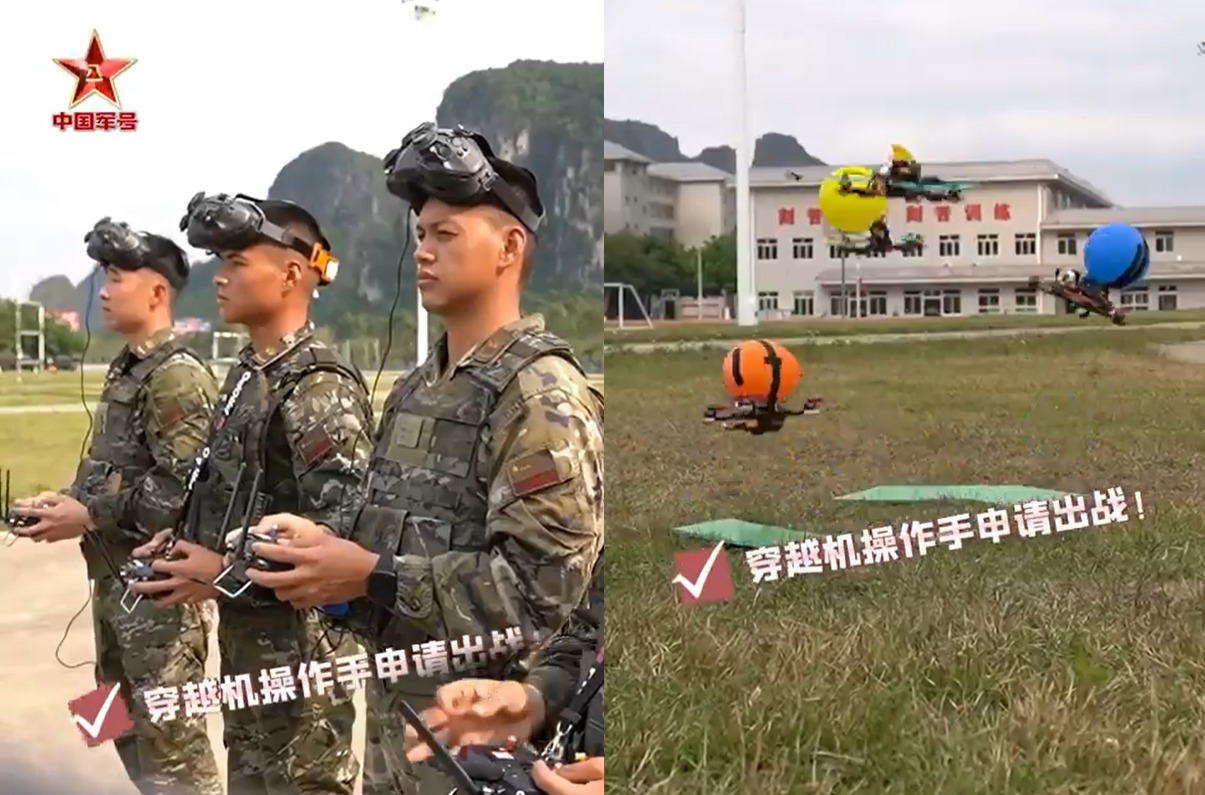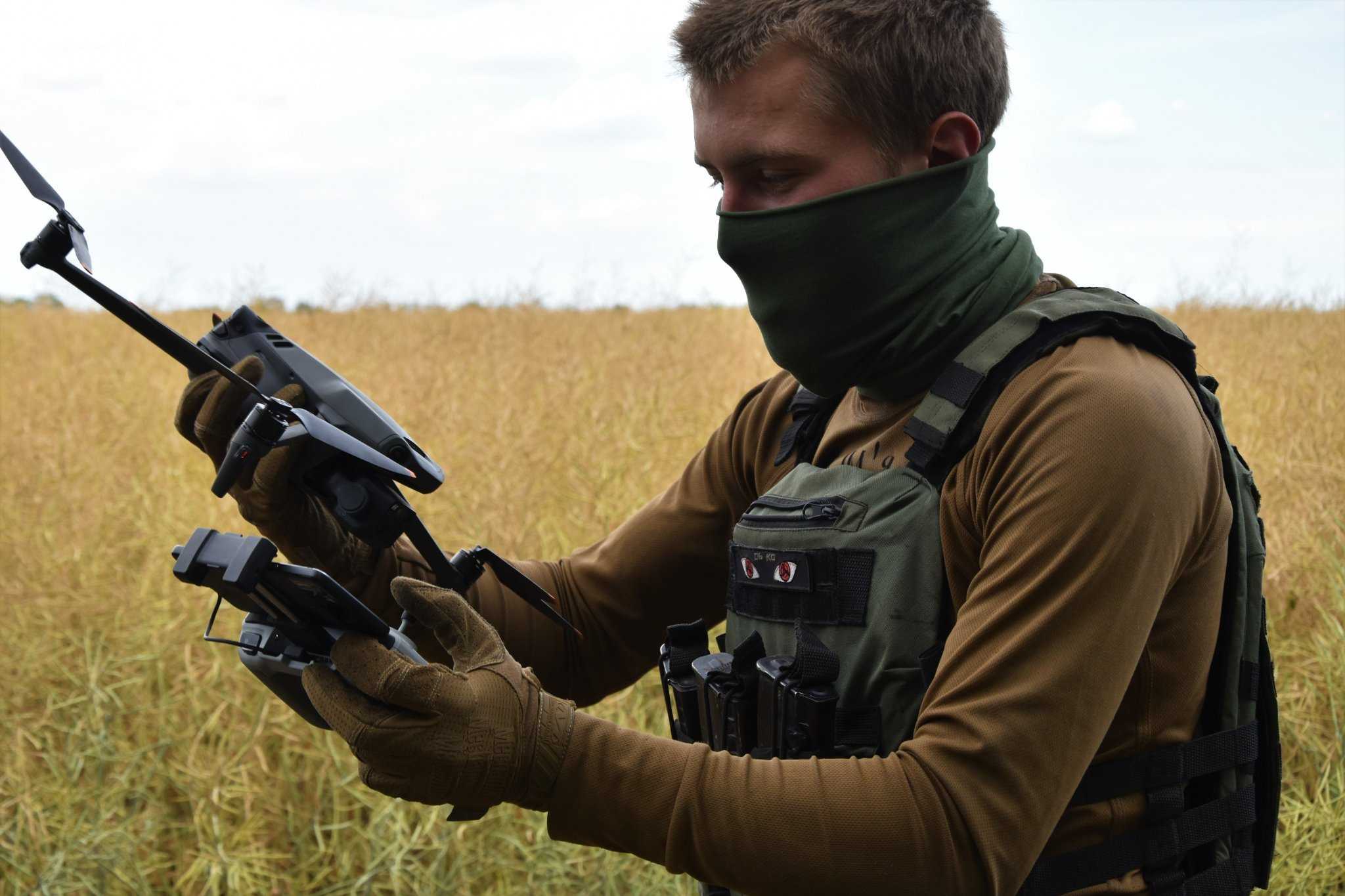In a harbinger of the rapidly evolving battlefield landscape, Chinese state media unveiled footage spotlighting an unprecedented training regimen. People’s Liberation Army troops were being trained to defend against a potent new aerial threat: weaponized first-person view (FPV) drones.
Chinese media recently released a video depicting members of the People’s Liberation Army (PLA) training to defend against weaponized first-person view (FPV) drones.
The video, broadcast by China’s state-run CCTV7 network, which focuses on PLA news, has undisclosed details regarding its location, filming date, and initial airing.
This highlights a growing global realization that these unmanned aerial threats can no longer be ignored on the modern battlefield.
Chinese PLA soldiers on counter-FPV drone training. pic.twitter.com/Ft43f3IQyW
— Clash Report (@clashreport) April 27, 2024
The mere existence of such preparedness underscores an escalating global realization. These unmanned killers, equipped with immersive cockpit-view cameras enabling precision strikes, can no longer be deemed a niche curiosity. They have breached the mainstream as potentially game-changing instruments of war.
Notably, the Indian Army has integrated FPV drones into the training regimen for Agniveer cadets, aligning with the increasing global adoption of FPV drones for tactical purposes.
FPV In The Russia-Ukraine & Israel-Gaza War
FPV drones have already drawn first blood in the conflicts raging in the Ukrainian eastern front against Russia and the Israeli fronts against Hamas in the Gaza Strip and Hezbollah along the Lebanese border.
Both sides have taken commercial off-the-shelf drone models and turned them into miniature cruise missiles, outfitting them with makeshift warheads to precisely strike armored vehicles, bunkers, and the troops inside. Their proliferation and lethality have forced other militaries to rapidly develop countermeasures.
Valerii Zaluzhnyi, the former embattled leader of Ukraine’s army, recently underscored the difficulties in contending with the widespread use of First-Person View drones along the frontline, which has significantly complicated stealth attacks. Russian FPVs, alongside other deployed drones, present a formidable challenge for Ukrainian forces.
Military analysts note trenches, once reliable shelters, now provide scant protection against these aerial hunter-killers raining munitions from above.

What Makes FPV Drones Really Lethal
Retired Indian Air Force Air Marshal GS Bedi explains, “The pilot receives real-time video from the drone’s camera, experiencing the battlefield as if physically onboard the aircraft itself.” This first-person perspective provides unprecedented situational awareness by providing immersive view and control aided by VR (Virtual Reality).
“Getting a view through the drone is not a new development. Typically, when using drones for surveillance, you always want to see what’s happening in the area of interest. FPV simply means that the pilot receives a first-person view of the drone in a virtual reality format. It’s a completely different view through the specially designed goggles for the FPV, wherein the drone pilot receives a three-dimensional virtual view of the battlefield scene, essentially experiencing it as if they were physically present within the drone. The pilot sees directly what the drone sees with great clarity and fidelity,” said Air Marshal Bedi, who was also the Air Advisor at the High Commission of India in London.
An FPV drone, or unmanned aerial vehicle (UAV), is equipped with a camera that wirelessly streams video footage to goggles, a headset, a mobile device, or any other display. This setup allows the user to have a first-person view (FPV) of the surroundings as the drone operates, enabling them to capture both video and still images.
FPV drones, among various types available, are at the forefront, offering operators real-time situational awareness and precise target engagement. They provide stand-off precision weaponry at a fraction of the cost of conventional munitions and require minimal training. Dubbed “cruise missiles in a backpack,” they have gained prominence for their live video feed, allowing operators to navigate as if they were onboard, enhancing defense capabilities.
There are different kinds of UAVs in use for surveillance, weapon guidance based on payload capacity, image intelligence, signal intelligence, and attack assistance.
“Since the FPV drones offer real-time views of areas of interest, enabling better control, they can prove to be valuable for the security forces in urban warfare scenarios, such as in Jammu & Kashmir or terrorist-infested areas. These drones are invaluable for tactical operations, allowing us to inspect buildings, verify compounds, and identify gun placements and other areas beyond the radar’s horizon. They can also carry small, destructive payloads and can be made to impact with the target with much more accuracy than conventional drones, as observed in the Russia-Ukraine war,” alluded Air Marshal Bedi.

Countermeasures To FPV drones
FPV drones are double-edged swords. Developing countermeasures is crucial as the drone realm expands.
“In the early days of UAV emergence, they were predominantly larger aircraft, and drones were not yet prevalent. Only a handful of machines were in use, necessitating a small number of trained pilots or operators. However, with the advent of drones, especially swarm drones, the situation has evolved. Now, with an increasing number of machines in operation, it is essential to train a large number of regular soldiers to operate them,” remarked Air Marshal Bedi.
“Countermeasures to FPV drones include radio frequency disruption, GPS jamming, and lasers. A powerful laser can bring down a drone by burning a crucial part like the electronic control system (ECS) within 10-15 seconds. If the drone carries fuel, it can catch fire; if it’s battery-powered, the battery can be damaged. Additionally, ‘kinetic kills’ involve shooting the drone down with guns, using designed interceptors, or deploying another drone to collide with, net, or capture the drone. There are many methods to counter FPV drones,” said the retired Air Marshal.
Conclusion
From guerilla insurgents to global superpowers, no contemporary force can afford to ignore the disruptive implications of the FPV paradigm.
We can use FPV drones in both wartime and peacetime, especially in peacetime. “There have been numerous reports of intrusions in the Punjab sector that have concerned the BSF, with drones carrying drugs from across the border. While they may be carrying drugs today, they could transport weapons tomorrow. So, even in peacetime, this is a significant concern that needs to be addressed,” Air Marshal Bedi remarked.
FPV drones are available in both manual and Artificial Intelligence-enabled modes, offering speed, compactness, and extreme maneuverability—ideal for close-quarter battle (CQB) scenarios like counterinsurgency and counter-terrorism operations. These drones merge personalized target selection, accuracy, autonomy, electronic warfare (EW) resistance, and guidance into a single, cost-effective platform compared to larger, more sophisticated counterparts.
The rules of warfare are being rewritten by compact, AI-enabled FPV drones, merging precision, autonomy, and electronic attack resistance into potent, cost-effective packages. Ubiquitous and expendable, their quality stems from sheer quantity. In future high-intensity conflicts where ammunition expenditure rates dictate victory, unleashing FPV drone swarms may prove the decisive edge.
Swarming expendable FPV drones could potentially overwhelm traditional air defenses in future high-intensity warfare where ammunition expenditure rates become the crucible of victory. The aerial domain has assumed a revolutionary unmanned dimension.
The skies are unmistakably crowded with these unmanned aerial combatants—harbingers of a new era of airborne attacks and counter-attacks fought by teleoperated drones and their human pilots. Whichever military first unlocks the full potential of this FPV paradigm could decisively tilt the global balance of military power in its favor.
- Shubhangi Palve is a Defence and aerospace Journalist. Before joining the EurAsian Times, she worked for ET Prime. In this capacity, she focused on covering Defence strategies and the Defence Sector from a financial perspective. She offers more than 15 years of extensive experience in the media industry, spanning print, electronic, and online domains.
- Contact the author at shubhapalve (at) gmail (dot) com.




